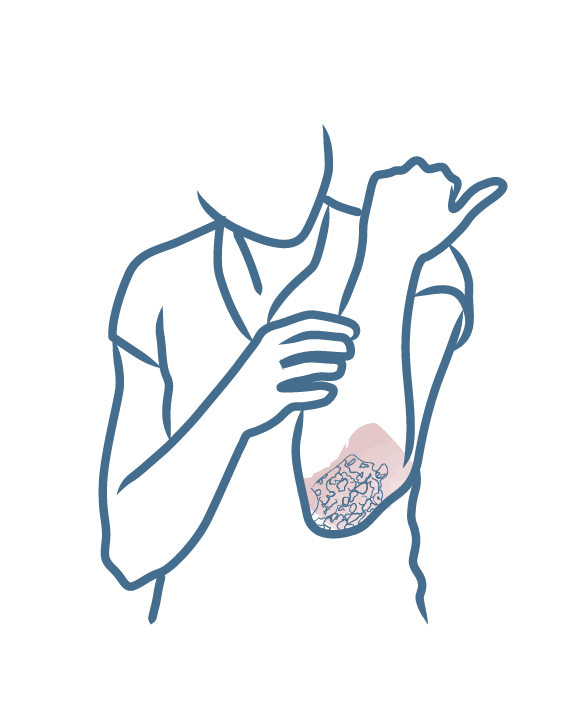-
Your concerns
Our articles to help you gain a better understanding
-
Our solutions
-
Ducray Dermatological laboratories
Our articles to help you gain a better understanding

Plaque psoriasis is the most common and well-known form of psoriasis, but there are many other types! Psoriasis can develop in forms very different to plaque psoriasis.

Summary
It should be noted that a patient may have several forms of psoriasis at the same time, since it is ultimately the same mechanism that is expressed in different ways.
As the name suggests, guttate psoriasis is characterized by extremely small and numerous lesions, usually only a few millimeters and less than a centimeter in size. Guttate psoriasis is most common in children, adolescents and young adults. Lesions tend to appear on the torso (both on the front, on the stomach, and on the back), the limbs, and sometimes on the face.
Certain bacterial infections, such as those involving bacteria known as streptococci, have been identified as possible trigger factors. In the large majority of cases, patients report having had an infectious disease, such as strep throat, only a few days or weeks before the rash appears. Flare-ups of guttate psoriasis are often a one-off occurrence, however plaque psoriasis can develop relatively quickly after a case of guttate psoriasis.
Conversely, a flare-up of guttate psoriasis may occur in an adult patient already suffering from plaque psoriasis. Some adults have chronic forms of guttate psoriasis where during a flare-up, small, drop-like lesions appear rather than large plaques.
The same classes of drugs are used in the treatment of guttate psoriasis as for plaque psoriasis, namely medicinal creams (cortisone and vitamin D derivatives), or systemic treatments and phototherapy if local treatments prove ineffective. Nonetheless, if the infection that caused the disease is still active, treatment of the infection may help relieve the guttate psoriasis flare-up.
Psoriasis-prone skin

Skin prone to stubborn dry plaques
NEWSLETTER
Dermatological expertise
To better understand your skin and hair, discover our exclusive content and innovative care products designed to improve your quality of life..